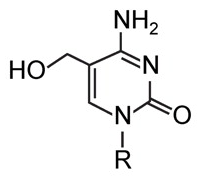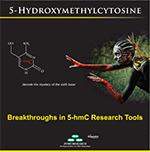
News 2011
|
CMBN scientists have published paper in Proceedings of the National Academy of Sciences of the U.S.A. Neural stem/progenitor cell proliferation and differentiation are required to replace damaged neurons and regain brain function after hypoxic-ischemic events. DNA base lesions accumulating during hypoxic-ischemic stress are removed by DNA glycosylases in the base-excision repair pathway to prevent cytotoxicity and mutagenesis. Expression of the DNA glycosylase endonuclease VIII-like 3 (Neil3) is confined to regenerative subregions in the embryonic and perinatal brains. Here we show profound neuropathology in Neil3-knockout mice characterized by a reduced number of microglia and loss of proliferating neuronal progenitors in the striatum after hypoxia-ischemia. In vitro expansion of Neil3-deficient neural stem/progenitor cells revealed an inability to augment neurogenesis and a reduced capacity to repair for oxidative base lesions in single-stranded DNA. We propose that Neil3 exercises a highly specialized function through accurate molecular repair of DNA in rapidly proliferating cells. Sejersted Y, Hildrestrand GA, Kunke D, Rolseth V, Krokeide SZ, Neurauter CG, Suganthan R, Atneosen-Åsegg M, Fleming AM, Saugstad OD, Burrows CJ, Luna L, Bjørås M |
CMBN scientists have published a paper in Proceedings of the National Academy of Sciences of the U.S.A. The paper links ubiquitin and the Rad6–Bre1 pathway to cell cycle progression. In this paper the authors determined the genetic network of the cyclin dependent kinase CDK1 in the budding yeast S. cerevisiae, and identified numerous cellular processes that involve Cdk1. They also discovered that the availability of free ubiquitin is important for efficient entry into the cell cycle, and unraveled the pathway that links free ubiquitin to the cell cycle. This pathway, which consists of the E2 ubiquitin conjugase Rad6 and the E3 ubiquitin ligase Bre1, promotes transcription of cyclins. The increased levels of cyclins then activate Cdk1 to induce cell cycle entry. Rad6, Bre1 and Cdk1 are highly conserved from yeast to humans, and because cyclins are often overexpressed in many forms of cancer, the findings may have important ramifications for cancer research. Zimmermann C, Chymkowitch P, Eldholm V, Putnam CD, Lindvall JM, Omerzu M, Bjørås M, Kolodner RD, Enserink JM |
CMBN scientists have published a paper in Proceedings of the National Academy of Sciences of the U.S.A. The paper shows that the glial covering of brain microvessels may acquire barrier function. The authors generated a glial-conditional aquaporin-4 (AQP4) knockout mouse to show that glial cells control water movement at the blood-brain interface. They also resolved the controversy regarding the exact distribution of AQP4 and conclude that endothelial cells are devoid of AQP4. The present findings imply that drugs engineered to target AQP4 for therapeutical purposes will have to be designed to permeate the endothelial cell layer. Haj-Yasein NN, Vindedal GF, Eilert-Olsen M, Gundersen GA, Skare Ø, Laake P, Klungland A, Thorén AE, Burkhardt JM, Ottersen OP, and Nagelhus EA (2011) |
PhD-student Nadia N. Haj-Yasein at the Letten Centre has been selected to attend the 61st Lindau Nobel Leurate Meeting dedicated to Physiology or Medicine See link |
 Adam Robertson and John-Arne Dahl at CMBN have developed a novel method for the identification of the "6th" base in DNA, the newly identified 5-hydroxymethylcytosine (5-hmC) which is produced following hydroxylation of 5-methylcytosine. They also identify high levels of 5-hmC at promoters of pluripotent and lineage specific genes in embryonic stem cells.
Adam Robertson and John-Arne Dahl at CMBN have developed a novel method for the identification of the "6th" base in DNA, the newly identified 5-hydroxymethylcytosine (5-hmC) which is produced following hydroxylation of 5-methylcytosine. They also identify high levels of 5-hmC at promoters of pluripotent and lineage specific genes in embryonic stem cells.
Robertson AB, Dahl JA, Vågbø CB, Tripathi P, Krokan HE, Klungland A
A novel method for the efficient and selective identification of 5-hydroxymethylcytosine in genomic DNA
Nucleic Acids Res (in press)
CMBN scientists have published a paper in the new journal Nature Communications on mammalian tRNA modifications.
van den Born E, Vågbø CB, Songe-Møller L, Leihne V, Lien GF, Leszczynska G, Malkiewicz A, Krokan HE, Kirpekar F, Klungland A, Falnes PØ
ALKBH8-mediated formation of a novel diastereomeric pair of wobble nucleosides in mammalian tRNA
Nature Communications, 2, 172
CMBN scientists have published a paper in Proceedings of the National Academy of Sciences of the U.S.A. The paper describes new physiological roles for the aquaporin-4 (AQP4) water channels in the brain.
The authors identify a novel molecular complex essential for cell volume regulation in astrocytes. They show that AQP4 makes a complex with the osmosensitive cation channel TRPV4 in astrocytes. This complex is essential for the regulatory volume decrease and the intracellular calcium response when astrocytes are exposed to osmotic stress. This study shows that AQP4 is involved in osmosensing and volume regulation and might be even involved in astrocyte signaling.
Benfenati V, Caprini M, Dovizio M, Mylonakou MN, Ferroni S, Ottersen OP, Amiry-Moghaddam M
An aquaporin-4/transient receptor potential vanilloid 4 (AQP4/TRPV4) complex is essential for cell-volume control in astrocytes
Proc Natl Acad Sci U S A (in press)
A new course in Advanced Neurobiology for master students and PhD students will be held this spring: MBV4340 / MBV9340.
We congratulate Jon with his 70th birthday on the January 16, 2011.
In order to celebrate Jon, CMBN would like to invite his friends and fellow scientists at the Centre to a reception on Friday January 28 at 2-4 pm in the lunchroom at the Dept. of Anatomy.
CMBN scientists have published a paper in Proceedings of the National Academy of Sciences of the U.S.A. The paper describes a role of aquaporin-4 in Ca2+ signaling in astrocytes.
Thrane AS, Rappold PM, Fujita T, Torres A, Bekar LK, Takano T, Peng W, Wang F, Thrane VR, Enger R, Haj-Yasein NN, Skare Ø, Holen T, Klungland A, Ottersen OP, Nedergaard M, Nagelhus EA
Critical role of aquaporin-4 (AQP4) in astrocytic Ca2+ signaling events elicited by cerebral edema
PNAS, 108 (2), 846-851
See also the Research Highlight comment below:
Welberg L
Glia: Aquaporin: not so swell?
Nature Reviews Neuroscience, 12, 66
PO Box 1105 Blindern, NO-0317 Oslo, Norway. Tel: +47 22851528. Fax: +47 22851488
